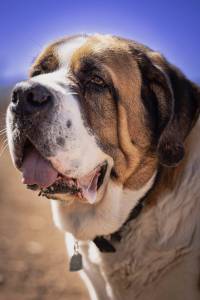
Understanding the Danger
First off, it’s essential to recognize why chocolate can be harmful to dogs. Theobromine and caffeine, both found in chocolate, can adversely affect a dog’s health. These substances can lead to various symptoms such as vomiting, diarrhea, rapid breathing, increased heart rate, seizures, and even death in severe cases. The darker the chocolate, the more dangerous it is for your dog. For example, baker’s chocolate contains higher levels of theobromine compared to milk chocolate. Understanding the potential dangers of chocolate ingestion is the first step in being prepared to handle such a situation.
Recognizing the Signs
If you suspect that your dog has eaten chocolate, it’s important to be vigilant for any signs of distress. Keep an eye out for symptoms like restlessness, excessive thirst, panting, trembling, or pacing. Additionally, vomiting or diarrhea, especially if it contains blood, can indicate a serious situation. In severe cases, your dog may experience muscle tremors, seizures, or an elevated heart rate. Being able to recognize these signs promptly can help you take appropriate action.
Immediate Steps to Take
If you discover that your dog has consumed chocolate, it’s crucial to act quickly. The first step is to contact your veterinarian or an emergency animal poison control hotline. Be prepared to provide information such as the type of chocolate ingested, the amount, and your dog’s weight. Based on this information, the professional will guide you on the next steps to take. In some cases, they may advise inducing vomiting at home, while in other situations, they may recommend bringing your dog in for immediate medical attention. It’s vital to follow their instructions precisely.
Prevention for the Future
After addressing the immediate situation, it’s essential to consider how to prevent similar incidents from happening in the future. Always keep chocolate and other potentially harmful foods out of your dog’s reach. Educate family members and visitors about the dangers of feeding dogs chocolate. Consider using secure containers and cabinets to store foods that can be toxic to dogs. Additionally, it’s beneficial to invest time in training your dog to understand and obey commands that prevent them from accessing unsafe items. Prevention is key to keeping your dog safe and healthy.
Dealing with a situation where your dog has eaten chocolate can be stressful, but being informed and taking swift action can make all the difference. Educate yourself about the dangers of chocolate for dogs and be attentive to any unusual behavior. Most importantly, always seek professional guidance if you suspect your dog has ingested chocolate. By understanding the risks, recognizing the signs, and taking immediate action, you can help safeguard your dog’s well-being. Remember, your quick response could save your dog’s life.
[/fusion_text]



